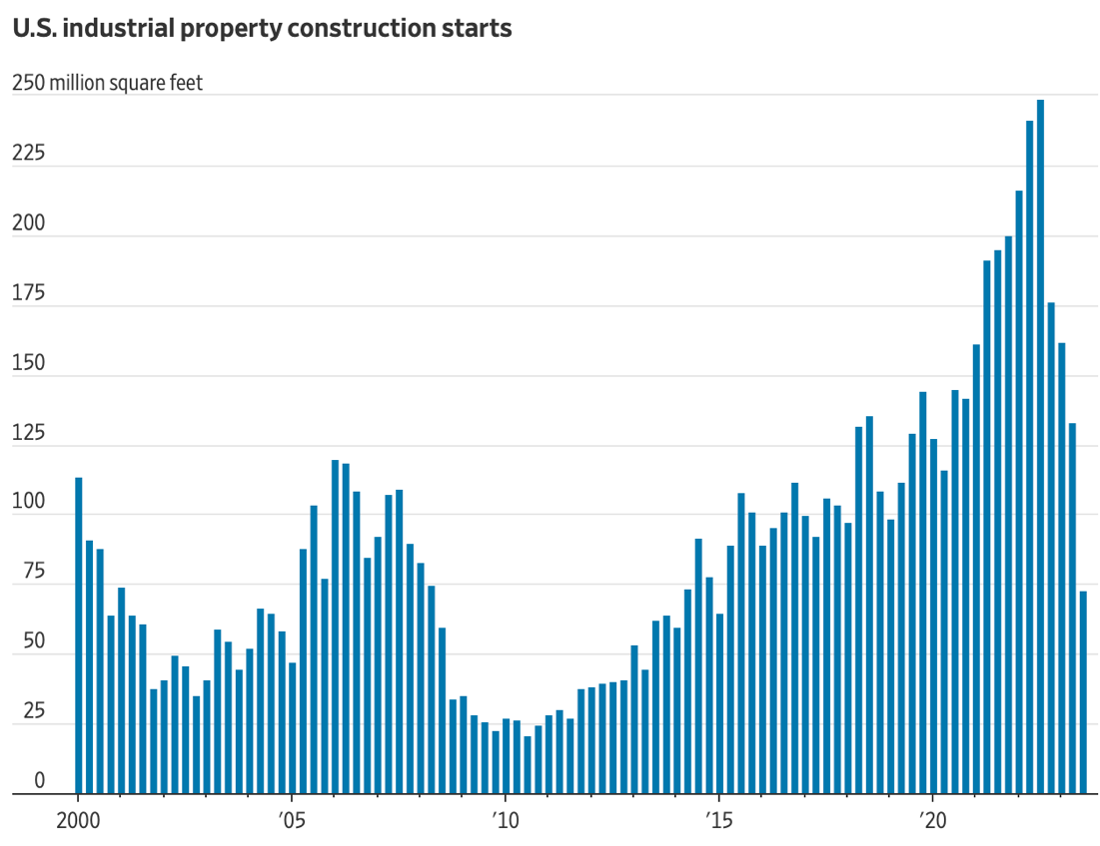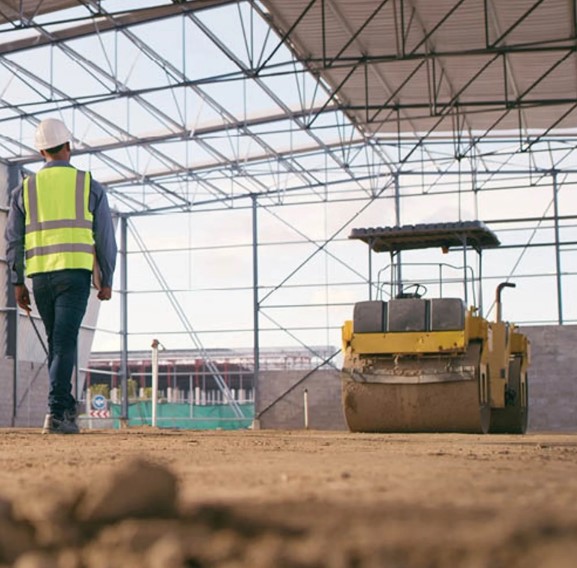Rising interest rates are stifling the construction frenzy of warehouses that have long fueled America’s booming e-commerce appetite. Over the last decade, warehouses soared in popularity among investors, with real estate giants like Blackstone and Singapore’s GIC snapping up extensive portfolios. As highlighted by The Wall Street Journal, the pandemic further fueled this fervor, with developers saturating urban and suburban landscapes with logistics facilities to capitalize on soaring rents and seemingly insatiable demand from the likes of Amazon.com and other online retailers.
However, the tide is turning as many major investors scale back their involvement. Industrial property construction plummeted by 48% in the first nine months of 2023 compared to the same period in 2022, marking the sharpest decline since 2009, according to The Wall Street Journal. Similarly, the dollar volume of industrial real estate sales dropped by 45% in the third quarter from a year earlier.

The primary culprits behind this slowdown are higher debt costs and a slowdown in leasing demand. Commercial mortgage rates have roughly doubled over the past year, while land prices haven’t fallen sufficiently to offset this increase, making construction financing increasingly challenging. Additionally, steeper interest rates have led to a decline in property values, with Green Street estimating a 16% drop in industrial real estate prices from their peak. Rising vacancy rates further exacerbate the situation as some e-commerce firms reduce their leasing activity, intensifying competition among landlords and discouraging developers from breaking ground on new projects.
Unlike the office sector, where future demand remains uncertain, warehouse landlords are not facing a crisis. Construction levels are still relatively high, vacancies are low, and mortgage defaults are uncommon. Moreover, if interest rates continue their recent decline, the industry could experience a resurgence.
The warehouse boom, which gained momentum during pandemic lockdowns, now appears to have reached a transition phase. As consumers increasingly turned to online shopping while confined to their homes in early 2020, demand for warehousing space skyrocketed. Even after lockdowns eased, this trend persisted, driving up warehouse rents as e-commerce companies scrambled to accommodate the surge in orders. Sensing a rare opportunity, real estate investors eagerly joined the fray.
Staying informed about a pause in activity in the industrial warehouse sector is crucial for various reasons. It provides valuable insights into broader economic trends and market shifts, which can impact investment decisions, business strategies, and employment opportunities. Understanding the factors driving the slowdown can help businesses and investors adapt and pivot effectively to mitigate potential risks and capitalize on emerging opportunities.








